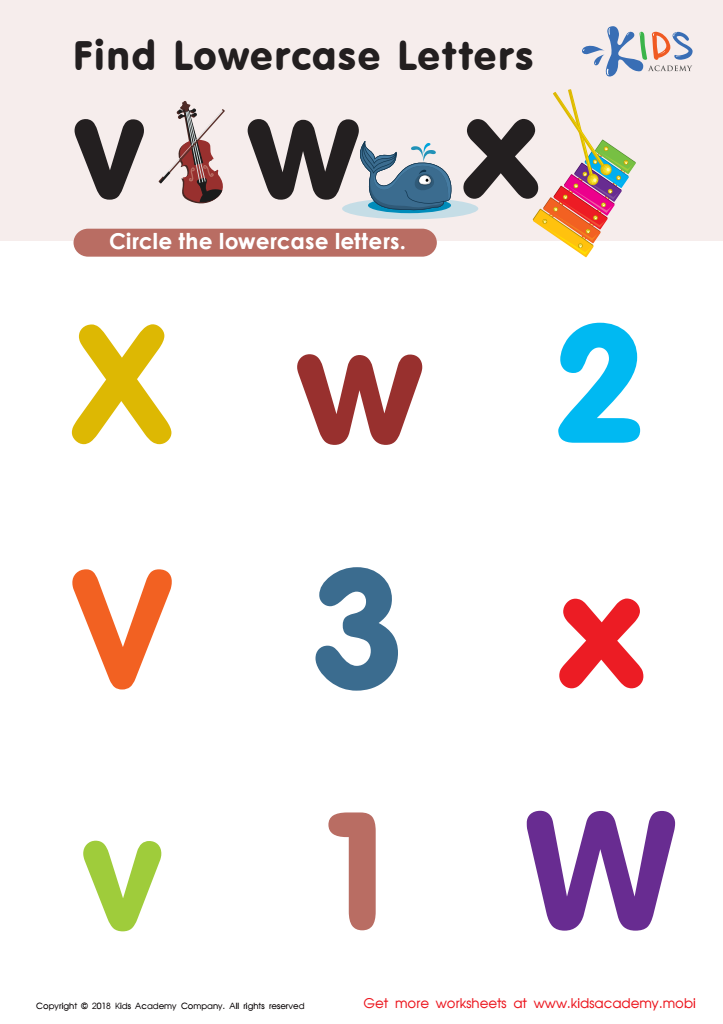Lowercase identification Normal Letter Recognition Worksheets for 4-Year-Olds
4 filtered results
-
From - To
Discover our engaging Lowercase Identification Normal Letter Recognition Worksheets, specially designed for 4-year-olds! These worksheets provide a fun and interactive way for young learners to identify and recognize lowercase letters. Each activity encourages cognitive development while enhancing fine motor skills through tracing, matching, and coloring tasks. Tailored to meet the learning needs of preschoolers, our resources nurture curiosity and confidence in reading. These printable worksheets are perfect for home or classroom use, sparking an early love for letters in your child. Download now and watch your little one thrive as they embark on their alphabet adventure!


Find Lowercase Letters d e f Worksheet


Find Lowercase Letters y z Worksheet


Find lowercase letters a b c Worksheet


Find Lowercase Letters v w x Worksheet
Lowercase letter recognition is a foundational skill critical for early literacy development in 4-year-olds. At this stage, children begin to encounter a variety of texts, and identifying lowercase letters is essential for reading improvement and comprehension. Unlike uppercase letters, which are typically encountered less frequently in print, lowercase letters make up the majority of written text.
Supporting lowercase identification helps children to recognize letters in various contexts, promoting their ability to decode words. When children can identify and differentiate these letters, they become more confident readers and writers. Furthermore, early recognition of lowercase letters is linked to overall language development, enhancing vocabulary and communication skills.
Additionally, teaching lowercase letter recognition fosters fine motor skills. Children learn to write letters, contributing to their writing abilities, which are crucial for their academic journey. Parents and teachers who prioritize this skill are providing a solid foundation that can lead to higher engagement and success in literacy tasks as the child progresses.
Ultimately, supporting lowercase identification aligns with the goal of equipping young learners with the skills they need for lifelong learning, setting the stage for a positive educational experience. Therefore, it is essential for parents and teachers to prioritize lowering letter recognition from a young age.
 Assign to My Students
Assign to My Students




















